#Trinidad and Tobago history
Explore tagged Tumblr posts
Text
The Origins and Evolution of Kalinda also known as "Calinda" or "Kalenda: A Martial Art and Dance Tradition
Kalinda, also known as “Calinda” or “Kalenda,” is a captivating stick-fighting warrior dance deeply intertwined with the history and culture of Trinidad and Tobago. With its origins tracing back to the Kongo Kingdom, encompassing regions of present-day Democratic Republic of the Congo, Republic of the Congo, as well as parts of Angola and Gabon, this traditional artform holds a special place in…

View On WordPress
#African Fighting style#African History#African martial art#Calinda#Dance Tradition#Kalenda#Kalinda#martial art#Trinidad and Tobago#Trinidad and Tobago history
1 note
·
View note
Text
The Steelpan in UK History...
www.factsbybriggs.com
94 notes
·
View notes
Text
instagram
From Brown History on Instagram:
“Did you know that in 1884, the British colonial government in Trinidad & Tobago banned "the beating of any drum, the blowing of any horn, or the use of any other noisy instrument"?
Drumming is an integral part of celebrations for many communities on the island. However, this did not deter the people; instead, it strengthened their resolve to preserve their traditions and religious customs.
Afro-Trinidadians discovered bamboo drums, known as "tamboo bamboo," as a popular new way to sustain the rhythms essential to their culture (see video). By the late 1930s, tamboo bamboo players began turning to metal objects like kitchen utensils, pots, pans, and buckets to create music.
The discovery of oil near the island's shores, coupled with WW II, brought hundreds of thousands of American 55-gallon oil drums to Trinidad. These discarded drums eventually paved the way for steelpans, now recognized as the national instrument of Trinidad & Tobago.
The drumming ban also affected East Indians. The "tassa" drum was central to their religious practices, particularly in Muslim observances. In 1884, more regulations banned the Hosay processions, which honors the martyrdom of Hussain, the grandson of the Prophet.
In an act of civil disobedience, a group of Indian laborers defied the suppression by continuing the Muharram procession as usual, beating tassa drums and carrying tajahs. They believed the law was unjust. However, as the procession passed, police opened fire on the crowd of men, women, and children. Between 18 and 20 people were killed, and hundreds were injured. This tragedy came to be known as "The Hosay Massacre of 1884." The British, however, referred to it as "The Hosay Riots."
Despite historical tensions, the drumming traditions of East Indians and Africans became a shared cultural bond. Over time, these traditions influenced each other, with Afro-Trinidadians playing tassa drums and Indo-Trinidadians performing in steelbands. Hosay has since evolved to include the wider community, becoming a shared event.
Source: Steel Drums and Steelbands by Angela Smith”
#trinidad and tobago#trinidadian culture#trinidadian#trinidad#caribbean#caribbean history#caribbean culture#west indian history#west indies#colonialism#afro caribbean#indo caribbean#afro trinidadian#indo trinidadian#hosay#steelpan#tamboo bamboo#Trinidadian history#history
29 notes
·
View notes
Text
Bravo Trinidad and Tobago on recognizing the State of Palestine! 👏🏼👏🏼
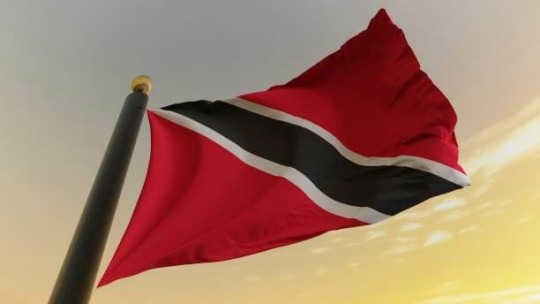
Now at 141 countries 💜
#trinidad and tobago#support for palestine#state of palestine#palestine#palestinians#free palestine#free gaza#justice#right side of history#caribbean#caribbean nation
33 notes
·
View notes
Text
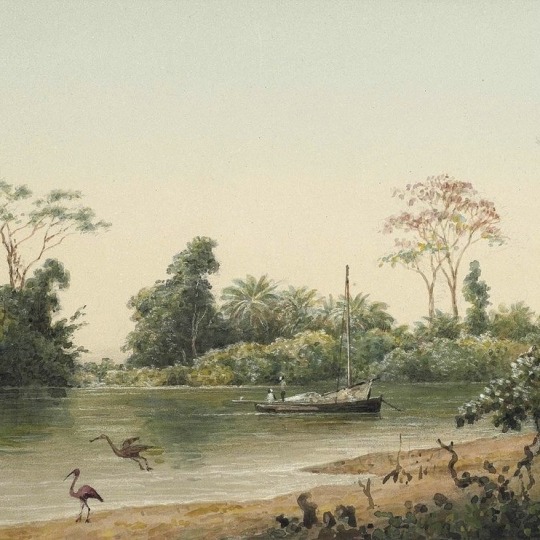
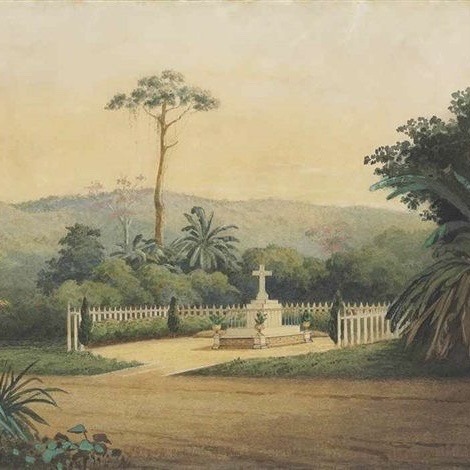
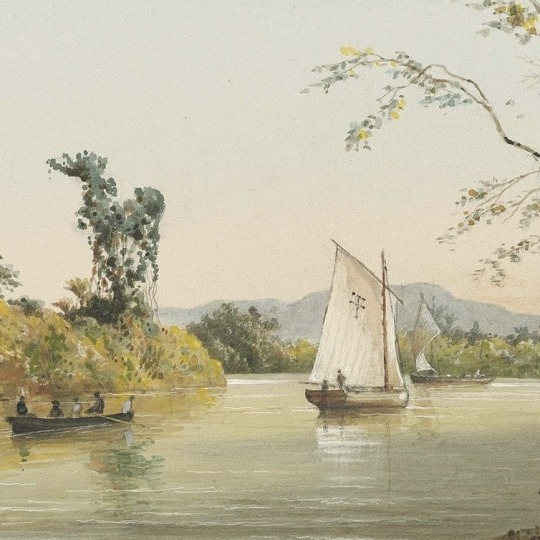
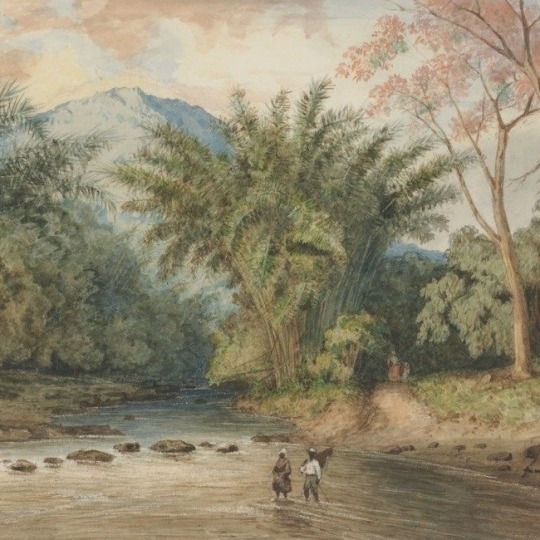
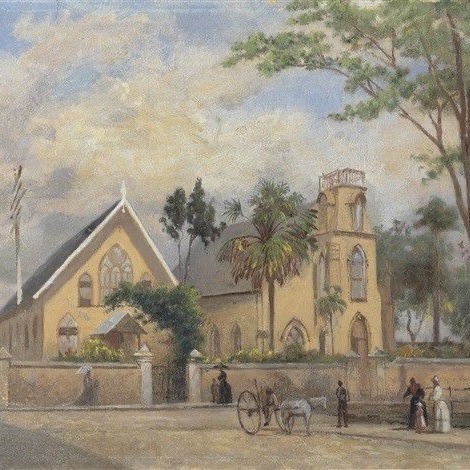
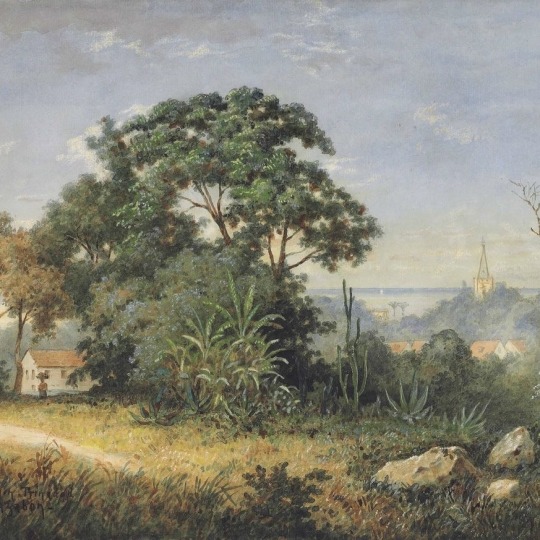
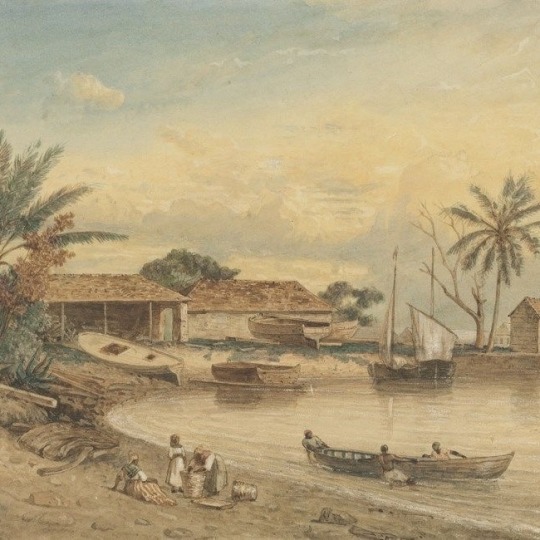

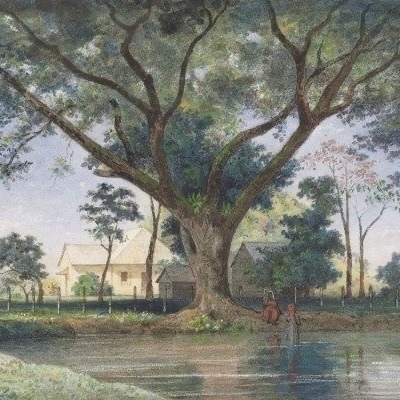
Artists: Michel-Jean Cazabon (1813-1888)
#michel-jean cazabon#fine art#colonial history#trinidad and tobago#caribbean#west indian#french artists#creole#english history#landscape#landscape painting#cottagecore#tropical aesthetic#peaceful atmosphere#forest#forest aesthetic#summer aesthetic#peace and quiet#countryside#country landscape#rural areas#art#history of art#caribbean history#colonialism#art blog#moodboard#art moodboard
119 notes
·
View notes
Text
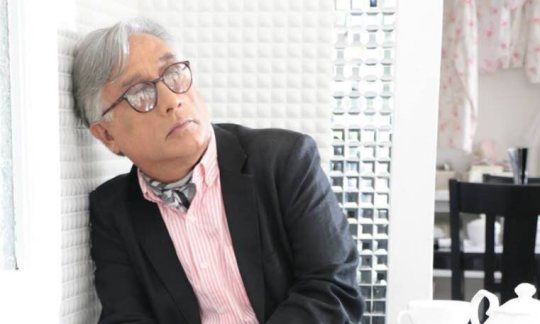
Raymond Choo Kong (deceased)
Gender: Male
Sexuality: Gay
DOB: Born 1949
RIP: Died 2019
Ethnicity: Chinese
Nationality: Trinadad and Tobago
Occupation: Director, producer, actor, activist
#Raymond Choo Kong#lgbt history#gay history#lgbt#lgbtq#male#gay#1949#rip#historical#chinese#asian#poc#trinidad and tobago#director#producer#actor#activist
93 notes
·
View notes
Text

Trinidad and Tobago: #Britain took #Trinidad in 1797, while also controlling #Tobago at the same time, while #Spain formally ceded it in 1802 and #France twice grabbed control, finally giving up in 1803.
#history#historyfiles#caribbean islands#caribbean#islands#britain#trinidad#trinidad and tobago#tobago#spain#france
2 notes
·
View notes
Text

Sexypink - know more about Cazabon.

#sexypink/the Alma Jordan Library#sexypink/ Michel Jean Cazabon#tumblr/Cazabon unveiled#tumblr/The National Trust#zoom presentation#Cazabon#art history#trinidad and tobago#Stephenka Lina
2 notes
·
View notes
Text
Something I think should be in our media and a part of early school’s history classes .
.
.
.
.
“Canboulay is a celebration of resistance and emancipation which re-enacted the days when enslaved Africans were driven with cracking whips to put out fire on sugarcane plantations.”
We are a people that have a powerful history.
Carnival is not evil. It is not “devil thing” .
It is a part of our rich heritage … it speaks to the freedom we all fight for & a celebration of how far we’ve come.
❤️🔥
45 notes
·
View notes
Text
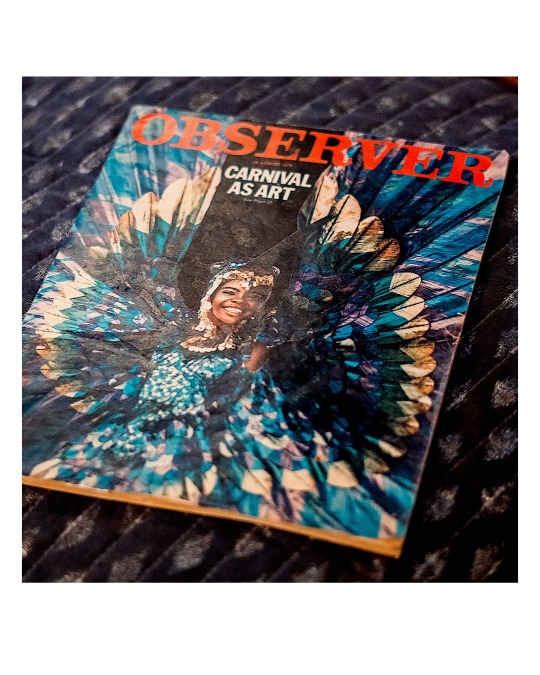
Galleryyuhself - Carnival splendor put to the page.
#galleryyuhself/ Observer#galleryyuhself/magazines#galleryyuhself/photography#galleryyuhself/typography#tumblr/Observer magazine#tumblr/Trinidad and Tobago Minshall mas history#tumblr/typography#Mas#Carnival#Peter Minshall#costumes
3 notes
·
View notes
Text
Fort King George (Tobago) was built by the British in the late 18th century. The fort was named after King George III and it served as a strategic military base for the British during their control of Tobago. Today, it is a popular tourist attraction.
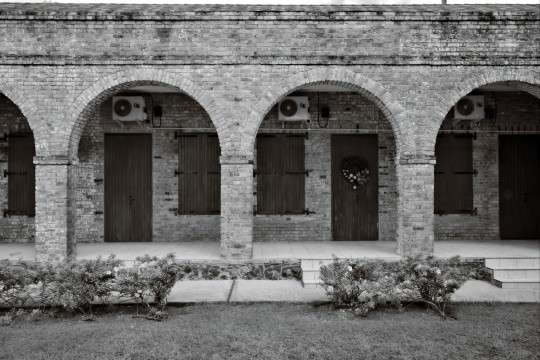
#trinidad and tobago#historic architecture#military history#original photography on tumblr#original photography blog
8 notes
·
View notes
Text
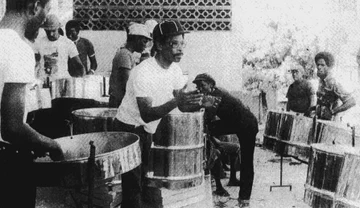
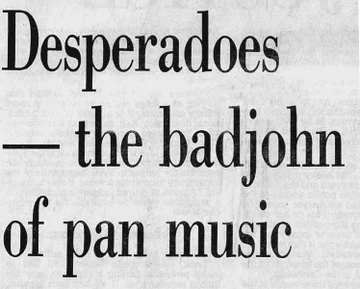
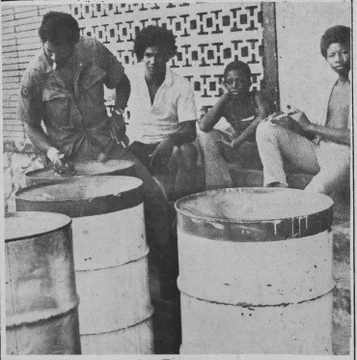
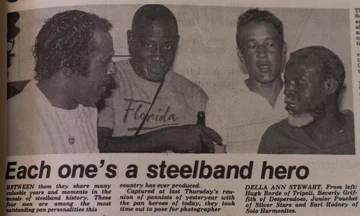
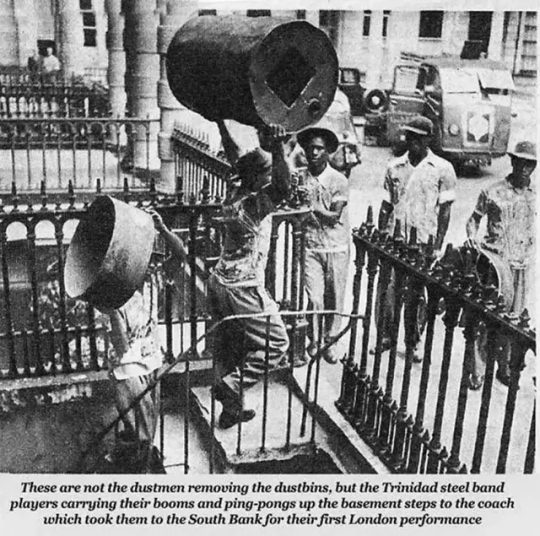
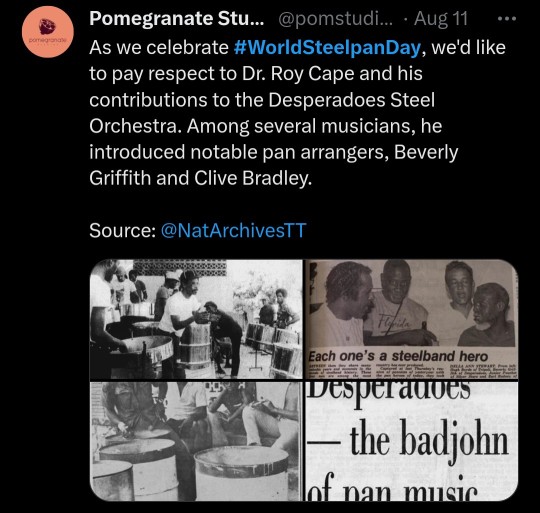
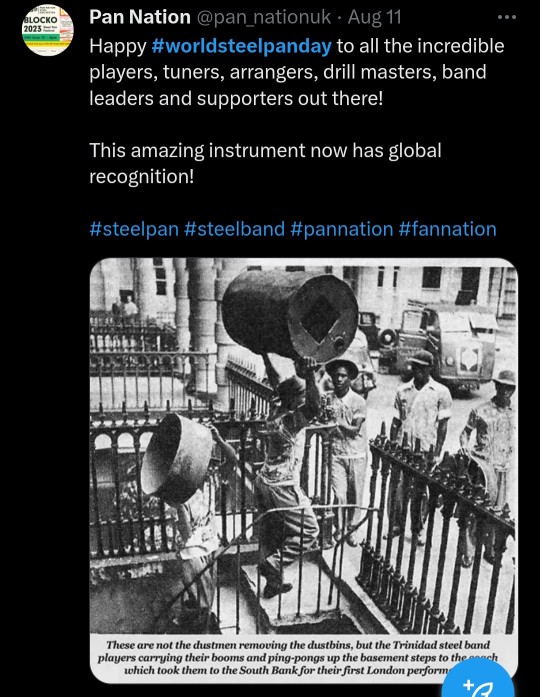
2 notes
·
View notes
Text
instagram
From @nationalarchivestt:
“#DidYouKnow This month is African History Month in Trinidad and Tobago? Since 1976, November has been dedicated to the celebration of the people of African descent who have shaped our nation.
It is fitting that African History Month follows Calypso History Month because calypso is in itself, rooted in our African heritage.
While research on the roots of calypso is ongoing, many sources point to Kalinda/Calinda (stickfighting) bands during the era of slavery as the origin of the genre in T&T.
The well-known calypsonian & anthropologist Hollis "Chalkdust" Liverpool has written about the function of the chantwell/chantuelle in Kalinda, describing them as persons who sang songs to inspire stickfighters into action. They also provided melodies for carnival masqueraders during Canboulay.
These songs, called cariso songs, were usually about protest against the ruling upper class. The power of the chantwell & their songs is reflected in the names that were chosen by them.
Tobagonian anthropologist & folklorist J. D. Elder wrote that "chantuelles identified themselves with the heroes of war and named themselves The Iron Duke, Pharoah, the Duke of Marlborough, Black Prince, etc." This culture of naming among chantwells, and later, calypsonians, continued into the 20th century.
Known as a sobriquet, these names were calypsonians' stage names. From the early 1900s, we see the continuation of sobriquets inspired by war and conflict like "Atilla the Hun," "Black Stalin," "Sir Lancelot," "Dictator," "Lord Invader," and "The Mighty Bomber."
Some calypsonians adopted ironic and witty sobriquets like "The Mighty Sparrow," "Tiny Terror," and "Bitterbush." Others chose to retain part of their birth names in their sobriquets, like "Lady Baldwin," "Singing Sandra," "Singing Francine," "Lord Nelson," "Singing Sonia," and "Marvellous Marva."
This photo shows some of "The Great Calypsonians" from "120 Years of Calypsoes to Remember" by the Mighty Sparrow, c. 1963, which is part of the National Archives of Trinidad and Tobago Calypso Booklet Collection. At the time, the calypso music industry was still male-dominated, as is reflected in this photo.”
#trinidad and tobago#trinidadian#trinbagonian#tobagonian#trinidad#Tobago#calypso#caribbean music#caribbean history#caribbean culture#west indian history#West Indian culture#black history#black diaspora#afro caribbean#history
7 notes
·
View notes
Text
Enslaved Muslim Scholars Of The Caribbean
youtube
#islam#muslims#muslim#islamic history#world history#history#caribbean#african#north africa#middle east and north africa#west africa#morocco#jamaica#haiti#trinidad and tobago#trinidad#youtube video#youtube#england#scholars#slavery#Youtube
3 notes
·
View notes
Text

Hey #Lovers❤️🔥! Explore the vegan paradise of Trinidad 🇹🇹 on 🌺RAW1111.COM🥑 🗺️. Dive into the rich culture and plant-based wonders! 🌿 #GVWU Go Vegan With Us 🌱💚
#trinidad#trinidad and tobago#port of spain#San Fernando#arima#Tobago#ancient history#history#educate yourselves#educate yourself#education#blogging#blog#vegan#fruits#nature#raw vegan#vegan lifestyle#vegetables#vegan food#realnessalwayswins#gvwu#plantbased
1 note
·
View note